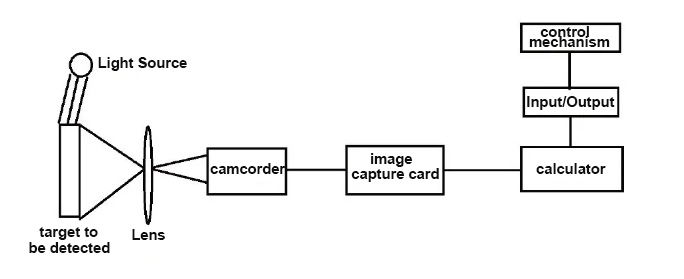Application of machine vision in fire protection technology
Oct. 25, 2023
With the continuous development of artificial intelligence and image processing technology, machine vision technology plays its value in several fields. Among them, machine vision is well applied in fire fighting technology.
Smoke sensors and corresponding pumps have been part of automatic fire protection systems for decades. However, there is still a certain gap in fire sensors for indoor environments, where an alarm is only signaled when fire or smoke comes into contact with the sensor. Installation of fire sensors in outdoor environments is difficult to realize, but the development of machine vision technology provides feasibility for monitoring in outdoor environments. Firefighting robots are currently being used in the firefighting field. However, because the algorithm of machine vision for fire monitoring has not been perfected, the development and application of firefighting robots with the ability to judge and handle fires has not been popularized. In this regard, some scholars have made corresponding research.
Principles of Machine Vision Technology in Fire Detection
--In the previous fire detection, the main use of machine vision technology in the digital image processing technology for video flame motion detection and edge detection. The flame detection technique has been optimized to achieve the detection of smoke-generated flames and the diffusion of flame pixels. These systems can be used to reduce the false detection of fire. Figure 1 shows the basic components of a machine vision inspection system.

The intelligent firefighting system based on machine vision will realize the integration of fire detection and fire control. It is equipped with two cameras with different functions: a normal camera is combined with fire control to capture images of fire guns firing their cannons, while an infrared camera is used to detect flame elements and extract features. From there, it comes to determine whether a fire is occurring and the severity of the fire. When a fire is judged to have occurred, the system will activate the alarm device and activate the fire extinguishing devices such as fire cannons to extinguish the fire automatically.
--Key technologies in the fire detection process
One important issue for machine vision to be used in fire protection systems is feature extraction and judgment for fires. Based on the judgment results, only the system can trigger the internal judgment, so as to take appropriate measures. Therefore, the fire detection process is very important.
--Suspect area extraction
In machine vision, there are various reasons, such as equipment, that can cause the acquired image to contain noise. Therefore, methods such as denoising the acquired image and enhancing the image contrast are used to reduce the interference of noise, so that the extracted image features conform to the cell phone, and thus the processed input image is more suitable for a particular application than the original image.
The gradual spread of fire as it occurs is reflected in the appearance of new targets relative to a fixed background in a series of monitoring images. These images are detected by using motion detection algorithms, and the corresponding foreground areas are then color-coded to finally obtain the fire-suspect areas.
--Extraction of flame characteristics
With the development of computer vision methods is, video fire detection has better detection results compared to existing fire detection methods such as smoke detectors and thermal sensors.
--Fire classification
After the intelligent system has extracted the flame features contained in the captured images, the fire can be graded based on the obtained flame features. It is categorized into Level 1 (fires that can be handled automatically), Level 2 (medium-sized fires that need to be handled automatically and reported to the nearby fire department), and Level 3 (large-sized fires that are handled by extinguishing and notifying the firefighters to be dispatched urgently). In addition, different classifications should be adopted for different areas. The fire level in mining areas can be appropriately lowered by half a level, while the fire level in areas such as grasslands and forests, where the spread is fast and the impact of the disaster is large, needs to be raised accordingly.
--Fire management
After classifying the fire, appropriate treatment measures need to be taken. In some remote and uninhabited areas, automatic fire extinguishing devices need to be equipped, and the automatic fire extinguishing devices will carry out pre-treatment and notification and reporting according to the classification.
Typical applications of machine vision in fire fighting
If a serious fire has already occurred in the area being monitored, timely reaction and response is very important. For this reason, automatic fire extinguishing systems are needed. The controlled use of fire cannons is the core of an automatic fire extinguishing system. According to the previous section, it works in three main processes:
Firstly, to obtain the real flame image; secondly, to extract the features of the suspected area in the image, and to discriminate and classify; finally, the intelligent control system controls the fire water cannon to control the fire, to achieve the purpose of fire prevention and control.
Intelligent camera systems for firefighting applications
Cameras and computer vision methods have good applications in many settings. Examples include fire detection using security cameras and infrared surveillance cameras. Automatic indoor alarm devices are categorized as smoke-sensitive and temperature-sensitive, which work in small enclosed spaces where it is relatively easy to detect fires in a timely manner. However, in large spaces, such as forests, large buildings, warehouses, etc., the detector function is not well utilized, because in these scenarios, it takes time from the onset of the fire to detect the smoke and temperature. Fire detection based on vision systems is not affected by space, and intelligent camera systems can detect smoke and heat and provide the direction of flame propagation as quickly as possible, so that fires can be handled and controlled accordingly from the start. Machine vision-based fire detection devices can be integrated into existing surveillance systems at a relatively low cost. The system is more efficient and convenient than traditional methods.
Trends in development prospects
In recent years, machine vision technology has developed rapidly, but there are still many shortcomings, mainly including:
(1) In the construction of the vision system, the main visual sensors used are of the same kind. Due to the lack of complexity between different classes of visual sensors, the imaging system under a single visual sensor often has inherent defects, resulting in insufficient acquisition of environmental information. For example, although visible light cameras have a high degree of acquisition of information such as color and detail, they work with limited effectiveness in environments with high smoke concentrations and poor illumination. Thermal imaging cameras, on the other hand, although they work well in low-light conditions, do not capture thermal infrared images of the same quality as visible light cameras.
(2) The computational capability of visual information processing system still needs to be improved, which needs to be supported by the development of computer hardware and software. Machine vision wants to analyze and understand the environment information ability to enhance, need to realize in a limited time on the flame image of this kind of big data more full and effective computational processing, and thus can only machine vision system computing power has high requirements. For this reason, there are higher requirements for computer GPUs and other equipment.
Therefore, on the one hand, it is necessary to combine the advantages of different visual sensors to build a more perfect visual perception system, so as to enhance the ability to collect environmental information. On the other hand, to improve the ability of machine vision to analyze and understand the environmental information is essential, which can be enhanced by strengthening the research on the algorithms for collecting environmental information in the fire scene. Ultimately, with the rapid development of computer operation system, it can bring better application prospects for the combination of machine vision and fire fighting technology.
CLZ Optical Co., Ltd.is a manufacturer specializing in high precision optical components. Main products are optical domes, optical windows, optical prisms, optical filters and so on. We also could provide OEM service, please contact us free time if you have any needs!
Previous: Laser communication terminal design





















